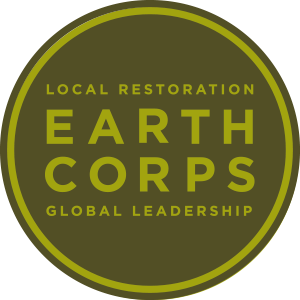Environmental justice and working towards a more equitable future for all
As we enter a new chapter, EarthCorps looks towards the Environmental Protection Agency (EPA) as they launch a new national office dedicated to advancing environmental justice and civil rights.

In support of the Biden Administration’s commitment to racial equity and civil rights, the EPA announced the foundation of a new national office which will address environmental challenges in underserved communities. According to the EPA, environmental justice is “the fair treatment and meaningful involvement of all people regardless of race, color, national origin, or income, with respect to the development, implementation, and enforcement of environmental laws, regulations, and policies.”
Environmental degradation disproportionately impacts low-income communities and communities of color. In their 2013 report “Health Disparities & Inequalities,” the Center for Disease Control and Prevention (CDC) reported that environmental factors significantly increase the chance of developing chronic health problems, such as asthma and diabetes. As gentrification and zoning laws funnel low-income families and minorities into underserved communities, factors such as a lack of green spaces to close proximity to major highways and pollutants continue to have negative and disproportionate repercussions on health and wellness.
However, built environments are a small part of the larger problem. In expanding on their definition of environmental justice, the EPA adds that “no group of people should bear a disproportionate share of the negative environmental consequences resulting from industrial, governmental, and commercial operations or policies.” Among other environmental challenges, the U.S. Department of Agriculture (USDA) reported in 2015 that approximately 39.4 million people lived in low-income and low-access (LILA) tracts – meaning 12.8% of the country’s population had limited access to affordable and nutritious food.
As we redefine our mission and work at the local level, we’re inspired by the formation of a new office dedicated to advancing environmental justice and racial equity at the national level. To learn more about EarthCorps’ new vision of an equitable world where all people and nature thrive together, and to read our three-year Strategic Plan, visit our End of Year Giving Campaign.
- United States Environmental Protection Agency (EPA) (2022) Learn About Environmental Justice, 2022.
- U.S. Center for Disease Control and Prevention (CDC) (2013) CDC Health Disparities and Inequalities Report — United States, 2013.
- U.S. Department of Agriculture (USDA) (2015) State-Level Estimates of Low Income and Low Access Populations, 2015.

